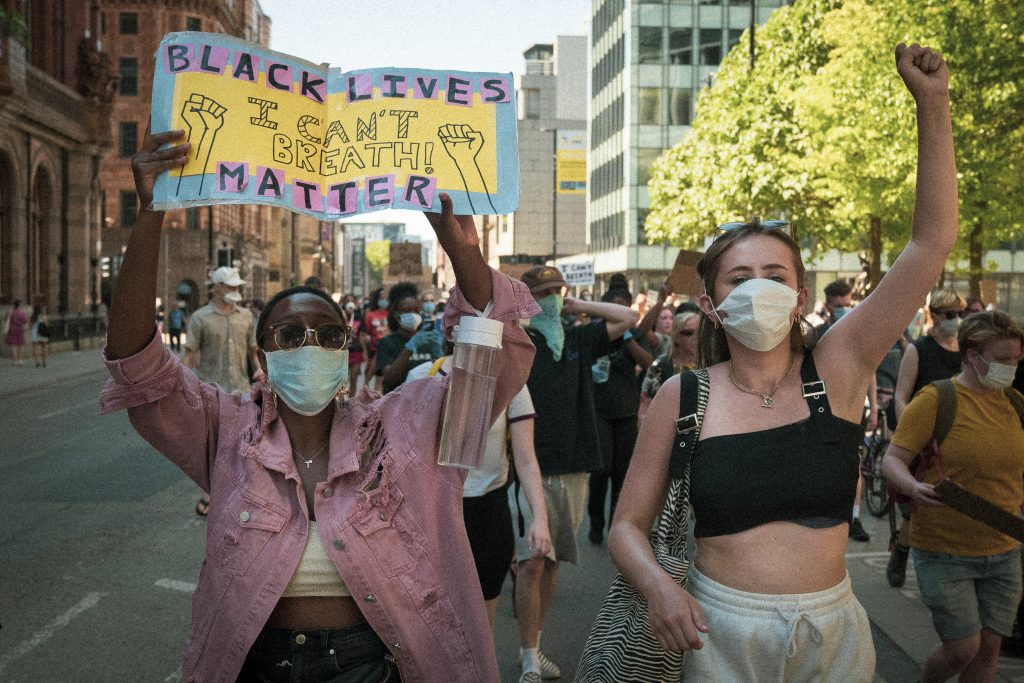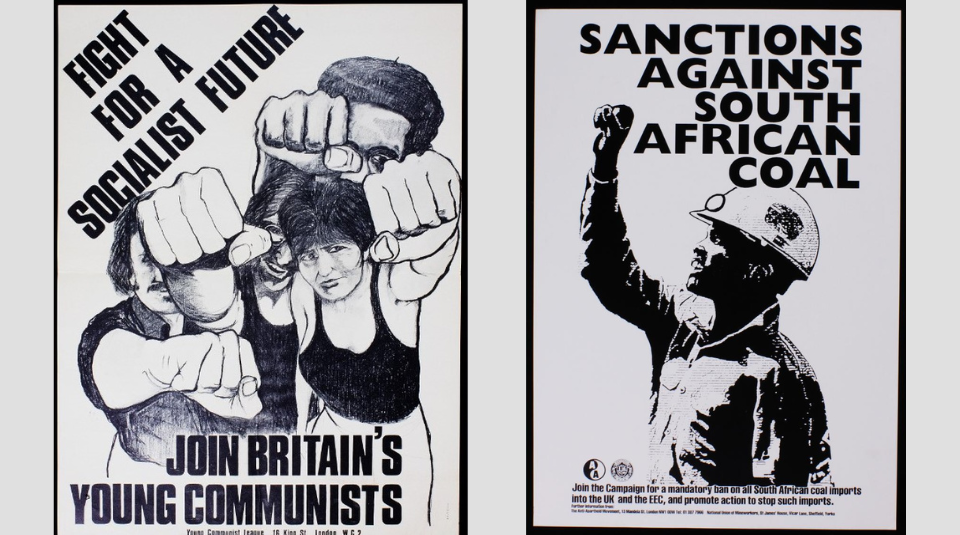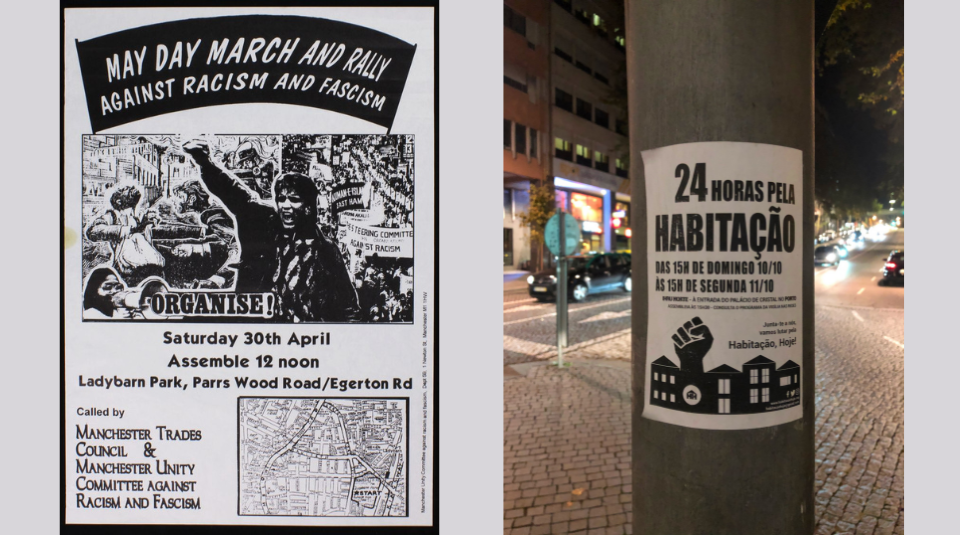The raised fist is a widely recognised political symbol that has been used by different people in different contexts historically and up to the present day to symbolise resistance to oppression. The history of the raised fist demonstrates just how significant visual symbols have been for the development of democratic politics. In this blog post art historian Simon Faulkner considers the history and meanings of the raised fist using examples that include posters and photographs from People’s History Museum’s collection.
The raised fist is a visual symbol used internationally by many different social movements and political organisations. This symbol is manifested either as a bodily gesture made when people raise their arms and clenched fists, or a graphic motif presented through a range of visual media, such as posters, street art, pamphlets, placards, badges, and t-shirts. Like all symbols, the raised fist is understood to represent an abstract idea. This idea being resistance. The raised fist is also understood to represent power from below and solidarity between people joined in political struggle. The symbol is therefore generally associated with popular democratic struggle against oppression. The raised fist can also be described as an iconic symbol, meaning that it has been widely reproduced and reused, and through this has become familiar to many people. As such, this symbol is also nomadic, moving from one social movement and organisation to another, across time and space for at least a century.

Image taken by photographer Jake Hardy, who attended the Black Lives Matter protests in Manchester during May and June 2020. People’s History Museum’s contemporary collection © Jake Hardy
The origin of the raised fist as a popular democratic symbol appears to be with the international labour movement in the early 20th century. However, the exact origin of this symbol is not completely clear. Trade unions and socialist and communist parties used the raised fist. It was also adopted by anti-fascist movements between the world wars, and by pan-African, anti-colonial, and anti-apartheid movements. Other recent movements that have used the raised fist have included Black Power, Women’s Liberation, and Gay Liberation. The raised fist, when linked to Black Power and anti-racist struggles has also been called the Black Power salute or Black Power fist. Building on this historic association with Black political struggle since the mid 20th century, the raised fist is currently most strongly linked to the Black Lives Matter movement, as demonstrated by its prolific use in 2020 in demonstrations and on social media after the police murder of George Floyd. But it is worth stressing that the regular re-use of the raised fist over time, in different places, and for different purposes demonstrates that no single political movement or political issue can claim ownership of this symbol. It is this lack of singular ownership as well as its versatility and broad recognisability that gives the raised fist its symbolic power and longevity.

The raised fist symbol has been used in graphic images in several different ways. Sometimes graphic images show a group of people raising their fists, as is the case with the Young Communist League poster, above on the left, from the early 1970s that declares ‘Fight for a Socialist Future’ and depicts four activists as if seen from above raising their fists towards the spectator.
At other times images show a single person raising their fist as in the poster, above on the right, from the Anti-Apartheid Movement (AAM) during the 1970s calling for sanctions against South African coal that shows a lone Black South African miner raising his fist.
In other images the raising of a fist is integrated into a larger scene of protest or combined with other related images. An example of this can be seen in this poster below on the left, calling for a May Day March and Rally Against Racism and Fascism, that presents a central image of a Black woman raising her fist to symbolise resistance and struggle along with an image of a violent racist attack and images of mass anti-racist demonstrations.

In other graphic examples the raised fist is more disembodied, as with the arm and fist depicted on the cover of the Gay Liberation Front manifesto published in London in 1971, or with American artist Frank Cieciorka’s renowned print of a clenched fist from 1968. The most well known raised fist of this type is the stencil of a clenched fist widely used in the context of Black Lives Matter. But there have been other novel graphic adaptations of the raised fist, where a clenched fist has been attached to an ordinary object to communicate that this object is a subject of political activism. Examples of this are the well known Atelier Populaire poster relating to the demonstrations and factory occupations in France in May 1968 that shows a factory building with a chimney, on top of which has been drawn a clenched fist so that the factory and its chimney look like a tensed arm supporting the fist. Or the flyer, above on the right, photographed in Porto, Portugal in 2021 that depicts a clenched fist on top of a row of houses and apartments, symbolising the struggle over housing as a political issue.
Simon Faulker is an art historian leading a fully funded collaborative PhD, between Manchester Metropolitan University (MMU) and People’s History Museum (PHM), which focuses on the analysis of the use of the iconic raised fist symbol in anti-colonial and anti-racist posters in PHM’s political poster collection.
Guest blogs are not curated by PHM but feature voices on topics relevant to the museum’s collection. Guest blogs do not necessarily reflect the views of PHM.
An earlier version of this blog was first published in September 2023.